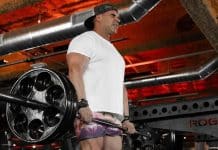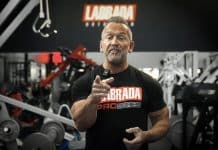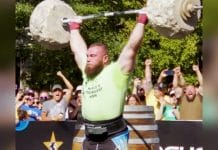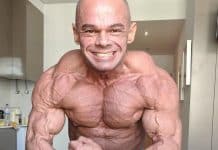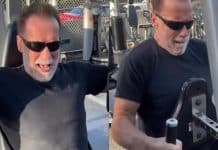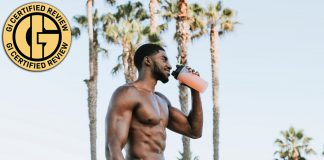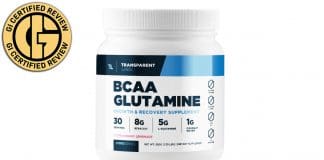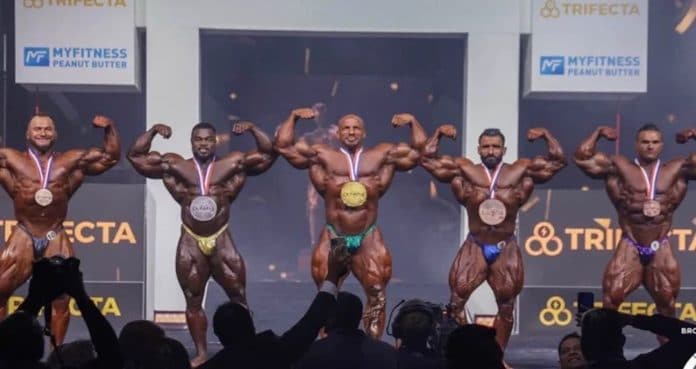
The Fruits of Thy Labor
Like a sculptor takes to stone, we builders take to our bodies, and when you build the body, you have to learn how to pose to show it off. Chiseling our flesh through countless hours at the gym. Like most artists, we can see the end in the beginning, but the hard part for us is getting there. Turning our vision into reality, and the soul crushing journey it takes to get there.
So when you do finally get there, when you’re at the top of the mountain, the battle is not over. You’ve got a good product, sure, but now you’ve got to sell it. Your work ethic will go to waste if you can’t show the judges your genetic potential has been realized. This is where IFBB hall of famer and seven consecutive Mr. Olympia placer Lee Labrada comes in.
In his YouTube video series below, you will see Lee show us his step by step tutorial on the art of posing and what it takes to be a champion. The video is 40 minutes long, so if you want a brief overview of his sage advice, we broke down the basics. But if you want the full details, check on the video at the end of the article.
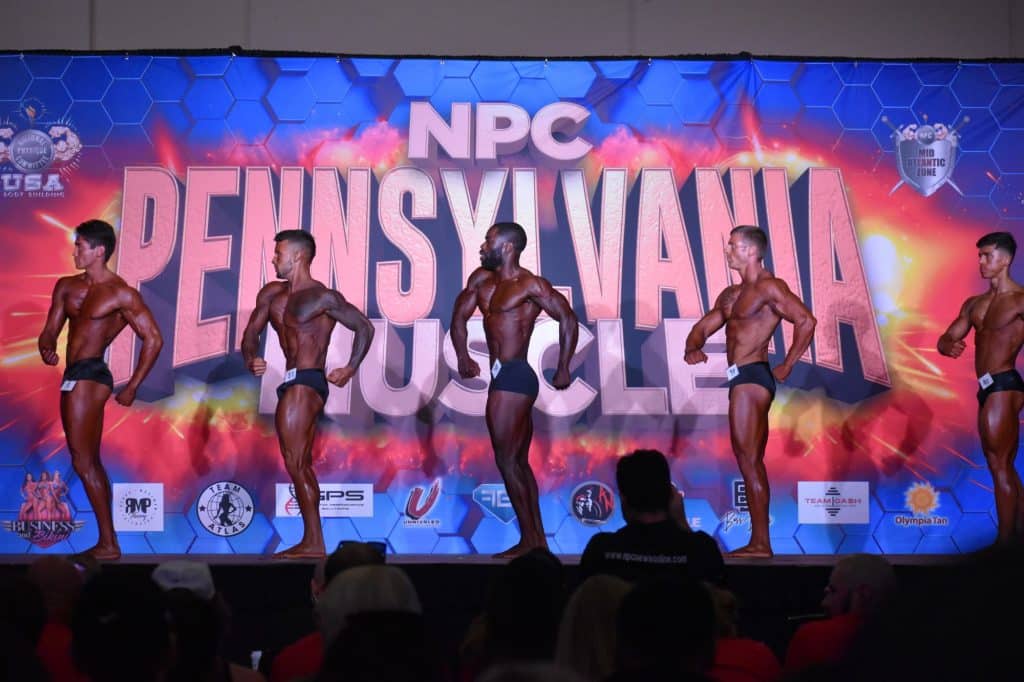
Mandatory Posing Round:
Next, in this round you will be required to perform the mandatory poses from all angles.
These are the mandatory poses you will hit: Front double bicep, front lat spread, side chest, side tricep, back double bicep, rear lat spread, abdominals with one thigh, and the favorite most muscular.
Freestyle Posing Round:
Finally, this is your opportunity as a competitor to break out from the pack. This is where your physique, presentation, and personality come to a head. This round is where you can put your best features forward with posing of your choice.
Typically, you are given a set amount of time to perform a “routine”. In that routine, you as a competitor have selected a song snippet to pose to. In federations like the NPC your routine can be no longer than 70 seconds.
Types of Poses
You have your static poses which are usually fixed traditional poses. Then you have dynamic poses, which are transitional poses as you move from one pose to the next. Your transitions are just as important as the poses themselves and you should remain flexed but still casual enough to retain a graceful flow.
You want the muscles to be presented throughout every movement. Stiff posing can come off almost robotic, and hide too much from the judges. You want to avoid the stiffness. If you have it, show it. You should hit poses, as well as transitions, that will show your best features.
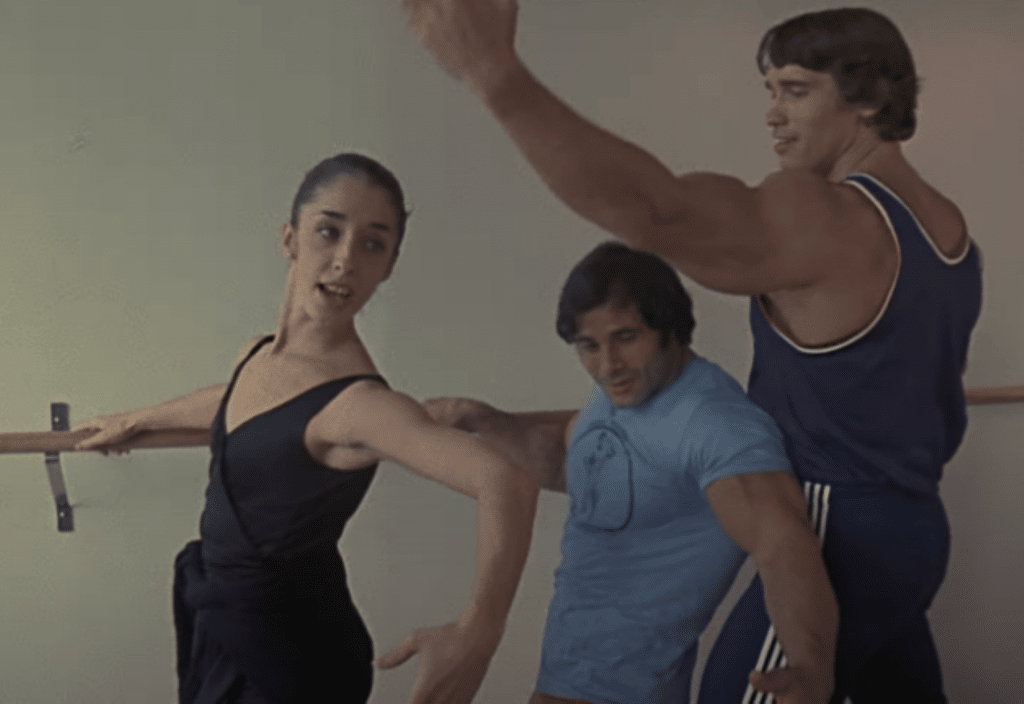
Something that you can do to assist with your transitions, but many bodybuilders are reluctant to do, is ballet. Arnold Schwarzenegger and his former training partner, the late Franco Columbu can be seen doing ballet lessons in the film “Pumping Iron” to help.
How to Perform The Mandatory Poses
Posing is definitely not easy, and it may take you awhile to learn. So, we are going to give you some tips on how to perform a few of the mandatory poses to help you out.
How to Pose From the Front
We will start off by covering the poses from the front that you will have to do. Let’s dive in.
Front Double Bicep: Starting from the ground up, flex your legs first. Push your heels inward, and the balls of your feet outward to pretty much “spread the floor” with your feet. This flexes your quads.
Next is your core. You can pull in a vacuum to make your core disappear, or puff out your chest so your abs show. You do not want to crunch your abs down.
Now onto the arms. First off, flex your biceps like normal, but make sure your forearms are far enough away from the bicep so you can show the peak of it. Don’t touch your forearms to your biceps. Elbow positioning matters greatly. You do not want your elbows at 90 degrees with your body. Take your arms and raise them slightly so your lats flare out, but not too high where it looks like you are scratching your head with both hands.
Front Lat Spread: Fist off, spread the floor with your feet to flex your quads. Next, take both thumbs, drag them along your lower lats until your hands are positioned where your love handles would be. Finally, puff your chest out.
Most Muscular: This can be done in a few ways. One way you can do it is the “crab” pose, which Phil Heath has mastered. Basically, flex your entire body to the max, and bend your arms in the front of the body, palms facing the torso.
Another way you can hit it is the “hands on hips” way. This is where you put your hands on their hips, and then your entire body is basically flexed to the max.
Abdominals and Thigh: Again, you want to spread the floor with your feet to begin from the ground up. You can put one foot forward to show off a little. But place both hands behind your head, blow out all the air, and crunch your abs. Do not crunch too much, or else you will hide your physique.
How to Pose From the Side
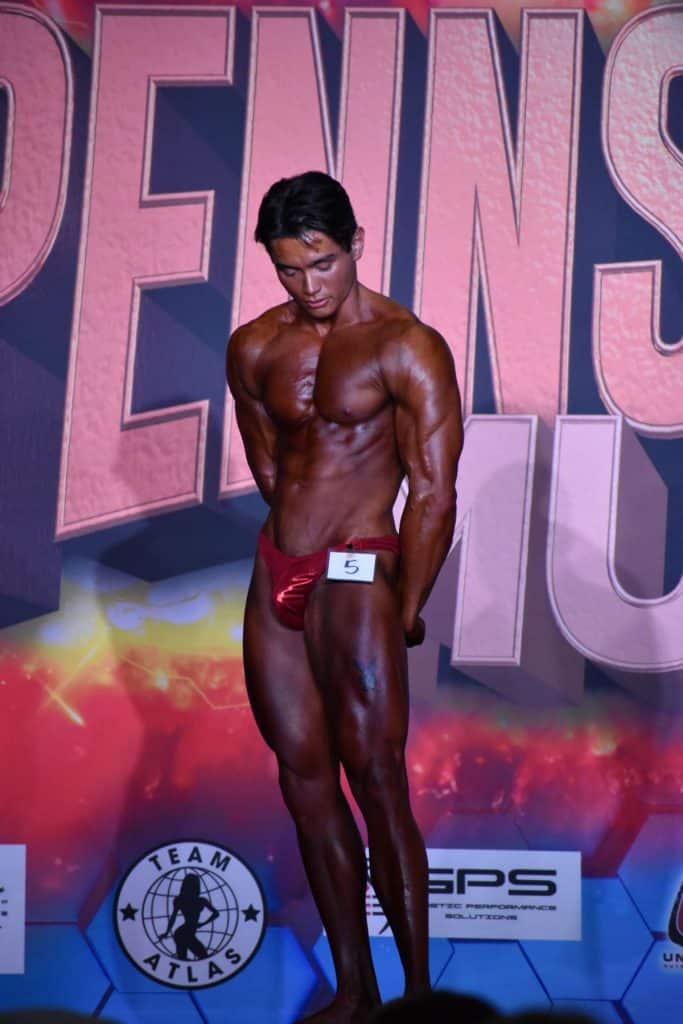
Side Tricep: First, turn your body to whichever side is your good side. You should start with your legs, which you should position like they are in the side chest pose. Your arm closer to the judges should be straight down at your side, or straight down slightly behind the body being gripped by the other hand, but still appearing to be on the side of the body. Your tricep is literally flexed at the side.
Side Chest: Turn to whichever side you feel is better to show off, this can be your left or right side. Start from the ground up. Smush your leg closest to the judges against the other leg to show the hamstring drop. Make sure the same leg is standing on the ball of the foot to flex the calf. Finally, you should have the leg closer to the back of the stage should be flat for stability.
Next is the upper body. You want the arm closest to the judges bent at a 90 degree angle, pressed against the torso, palm facing up, flex the bicep. The other arm should be being used to smash the pec closer to the back of the stage up against the other. The hand on the arm closer to the back of the stage should grip the wrist of the arm that is bent at 90 degrees.
Poses From The Back
Back Double Bicep: This is almost the same as the front double bicep except you want to your back angled down slightly to flex and show off the erectors.
Your leg positioning is also a little different here. You want one leg closer to the judges. You should flex the calf and hamstring to the max. The other leg should be flexed, but straight for stability. If you can, stand on the ball of your foot with the leg being used for stability to flex the calf a little bit. Make sure to squeeze the glutes on this pose.
Back Lat Spread: You want to start by positioning your leg just like the back double bicep. The upper body can be posed just like the front lat spread. The only difference is the back should be angled down slightly to show off the erectors.
How to Pose Wrap-Up
Overall, you have to take into consideration that posing is something that can make or break a physique. Now that you’ve got the basics we’ll let Lee Labrada take over with the detail, you should be in good hands from here. Watch his tutorial video series below.
https://www.youtube.com/watch?v=ZDy-fApLQ4k
Is Lee dropping knowledge in this video? Let us know what you think about this video and if its helped your training routine!
Let us know what you think in the comments below. Also, be sure to follow Generation Iron on Facebook, Twitter, and Instagram.


